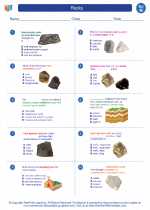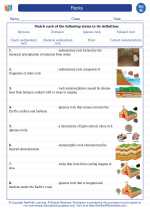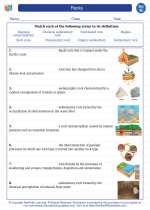Mantle
The mantle is the layer of the Earth that lies between the outer core and the Earth's crust. It is a thick layer of rock that makes up about 84% of the Earth's volume. The mantle is composed of silicate rocks rich in iron and magnesium, and it is divided into the upper mantle and the lower mantle.
Structure of the Mantle
The upper mantle is made up of solid rock, but it is capable of flowing over long periods of time. This flow of solid rock is what causes the tectonic plates of the Earth's crust to move. The lower mantle, on the other hand, is under high pressure and temperature, and is mostly solid due to the intense pressure of the overlying rock.
Functions of the Mantle
The mantle plays a crucial role in the movement of tectonic plates, which leads to processes such as seafloor spreading, subduction, and the formation of mountain ranges. It also has a significant impact on the Earth's geology, as well as the distribution of heat within the planet.
Study Guide for the Mantle
- What is the composition of the mantle?
- How is the mantle divided?
- What is the role of the mantle in the movement of tectonic plates?
- How does the mantle affect the Earth's geology?
- What are the key characteristics of the upper mantle and the lower mantle?
◂Science Worksheets and Study Guides Eighth Grade. Rocks

 Worksheet/Answer key
Worksheet/Answer key
 Worksheet/Answer key
Worksheet/Answer key
 Vocabulary/Answer key
Vocabulary/Answer key
 Vocabulary/Answer key
Vocabulary/Answer key
 Vocabulary/Answer key
Vocabulary/Answer key
